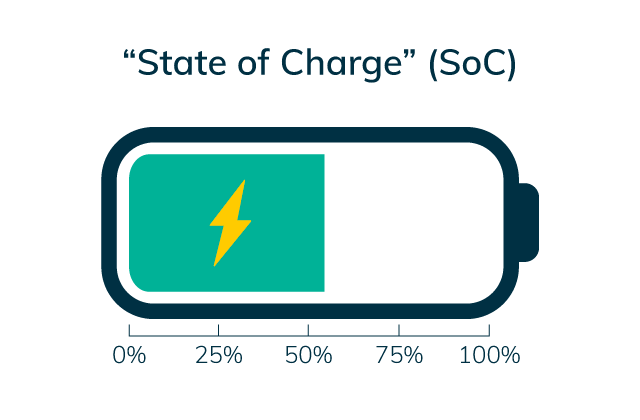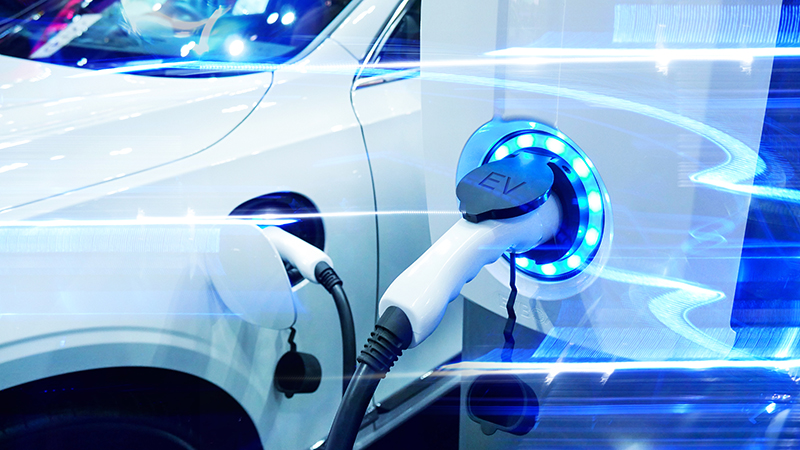Introduction
As electric cars (EVs) gain popularity, it’s critical to understand the factors that influence charging speed. The time it takes to charge your EV depends on a number of factors, including the state of charge in your battery, temperature, other loads in use, battery degeneration, and your vehicle’s current and voltage constraints. You can make informed decisions regarding when and where to charge your EV if you understand these elements and how they affect your charging experience. In this article, we’ll go over each of these Things That Affect Your Charging Speed in-depth and offer advice on how to improve your EV charging experience.
1. State of Charge (SoC)

When you start charging your EV, the state of charge, or SoC, refers to how full the battery is. The higher the SoC, the slower the charging pace. This is due to the charging process slowing down when the battery approaches its maximum capacity to avoid overcharging and potential battery damage.
For example, if your EV has a 100 kWh battery pack and you begin charging at 50% SoC, you will add 50 kWh to the battery. However, starting charging at 80% SoC will only provide 20 kWh of energy to the battery, and the charging pace will reduce as the battery approaches 100% SoC.
To maximize charging speed, begin charging when your EV’s battery has a lower SoC. This allows you to make use of the quicker charging speeds available on cheaper SoCs, reducing the time required to fully charge your EV. It is crucial to remember, however, that you should still try to charge your EV to a level that suits your driving needs in order to avoid running out of battery power while on the road.
2. Temperature of Your Battery
Your charging speed might also be affected by the temperature of your EV’s battery. Charging at high or low temperatures can limit charging efficiency and potentially harm the battery.
Charging at moderate temperatures, ideally between 50°F and 86°F (10°C and 30°C), maximizes charging speed and battery health. If the battery is excessively cold, below 50°F (10°C), the charging pace may be reduced since the battery absorbs energy more slowly. However, if the battery is extremely hot, above 86°F (30°C), the charging pace may be slowed, as high temperatures can limit charging efficiency and raise the risk of battery damage.
When charging in hot weather, it’s ideal to park your electric vehicle in a shady area or garage to keep the battery cool. When charging in cold weather, start the charging process while the car is still warm, or use a pre-conditioning tool on your EV’s app to warm up the battery before charging. You can help to ensure optimal charging speed and battery health by doing so.
3. Other Loads in Use While Charging

Using other electrical loads while charging your EV, such as air conditioning or headlights, might potentially decrease charging speed. This is due to the fact that the electrical load generated by these accessories competes with the charging process, potentially slowing it down.
To maximize charging speed, keep other electrical loads to a minimum while charging your EV. For example, if you’re parked and charging your EV in a hot area, switch off or use your air conditioning sparingly. Similarly, when charging your EV at night, switch off the headlights and any interior lights to reduce energy loads.
It’s worth noting that some EVs include a function called smart charging, which allows the charging rate to be automatically adjusted based on available electrical capacity and other loads. This function can assist in optimizing charging speed while reducing the risk of overloading the electrical system.
4. Battery Deterioration
All batteries deteriorate with time, which might impair their ability to charge quickly. Battery degeneration is a natural phenomenon that occurs when a battery is charged and discharged repeatedly. The degree of battery degeneration is determined by a variety of factors, including battery chemistry, usage patterns, and ambient conditions.
Maintaining the health of your EV’s battery is critical for optimizing charging speed. This includes avoiding long discharges, which can hasten battery degeneration, and charging your EV to a level appropriate for your driving needs. It’s also critical to follow your EV manufacturer’s battery care guidelines and avoid exposing your EV to extreme temperatures since high or low temperatures can hasten battery degeneration.
If you observe that your EV’s charging pace is slower than usual, this could be due to battery degeneration. In this situation, a certified technician may be required to inspect and service your battery to ensure optimal charging speed and battery health.
5. Your Vehicle’s Current and Voltage Limits
Your EV’s charging speed is also determined by its current and voltage constraints. These constraints differ based on the make and model of your EV and can have an impact on the maximum charging speed that your EV can accomplish.
To maximize charging speed, select a charging station that is compatible with the current and voltage constraints of your EV. For example, if your EV’s maximum charging rate is 50 kW, you should select a charging station that can supply at least 50 kW of charging power. Similarly, if your EV has a greater maximum charging rate, such as 150 kW or 350 kW, you’ll need to select a charging station that can supply that level of charging power in order to obtain the fastest charging speed.
Finally, understanding the variables that influence your EV’s charging speed is critical for improving your EV charging experience. You may make informed decisions regarding when and where to charge your EV by taking into account the level of charge, temperature, other loads, battery degeneration, and your vehicle’s current and voltage constraints.
Conclusion
Finally, the state of charge, temperature, other loads, battery degeneration, and your vehicle’s current and voltage constraints are all factors that can affect your EV’s charging pace. You can ensure that your EV is charged quickly and efficiently by recognizing these aspects and taking suitable efforts to optimize your charging process.
To summarize, it is critical to maintain an adequate level of charge in your EV’s battery, charge your EV in moderate temperatures, minimize other electrical loads while charging, maintain your battery health, and select a charging station that is compliant with your EV’s current and voltage limits.
By following these instructions, you may maximize your EV’s charging speed while also ensuring that you have the range to reach where you need to go. As EV technology evolves, new factors that affect charging speed are likely to arise, so remaining knowledgeable and up-to-date on best practices is critical to getting the most out of your EV.





